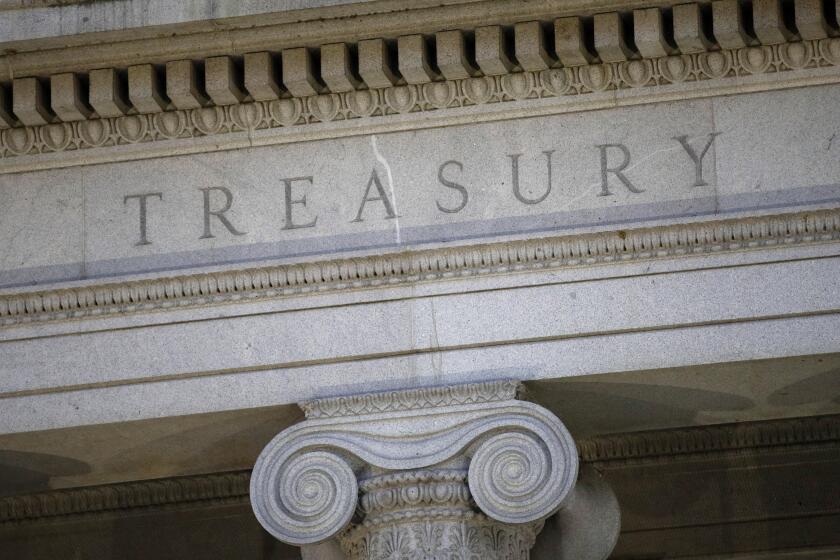Militant was an elusive figure
For more than two decades, Imad Mughniyah was among the most wanted terrorists on Earth, a top Hezbollah commander with close ties to Iranian intelligence, pursued by the United States, Israel and other nations for attacks that killed hundreds of their civilians and soldiers.
Known as the Fox, Mughniyah was a frustratingly elusive figure to his pursuers -- accused of many acts of terrorism, convicted of none.
Mughniyah was believed to have orchestrated strikes by the Shiite militant group on a U.S. Marine barracks, the U.S. Embassy and other American targets in Lebanon, which led President Reagan to order the withdrawal of U.S. troops from the troubled Middle East nation in 1984.
Attacks on an Israeli Embassy and Jewish community center in Argentina in the 1990s that killed 115 people were also attributed to Mughniyah, and for that, Interpol last year issued a “Red Letter” arrest warrant for him and five Iranians.
The Lebanese militant was believed to have amassed his own small army of loyal Hezbollah soldiers, as well as an arsenal of missiles stockpiled in southern Lebanon numbering in the thousands and able to strike several of Israel’s most populous cities.
In 2006, Mughniyah was suspected of being involved in the capture of Israeli soldiers that led to a war between Hezbollah and Israel. He may also have spent time in Iraq as part of an alleged effort by Iran to destabilize its neighbor and support a Shiite uprising.
And his prolific use of truck bombs is said to have so impressed Osama bin Laden when the two met in the mid-1990s that the Al Qaeda leader used them as the blueprint for attacks by his own fledgling organization.
Through it all, Mughniyah remained a ghost-like figure. Current and former intelligence officials from the United States, Israel and some other countries said Wednesday that they were never sure what the chief of international and military activities for Hezbollah, the Party of God, was up to.
Former CIA agent Robert Baer said Mughniyah eliminated every piece of paperwork about himself, including the passport photo in Lebanese government files. “He erased his past,” Baer said.
Mughniyah changed his radio frequency every day, never took the same route twice and met only in buildings with more than one exit, Baer said.
“In terms of terrorism he was the best there was, truly a professional. I chased him for 15 years, but saying I chased him implies that I actually got close to him. And I’m not sure that I ever did.”
Mughniyah began his career during the Lebanese civil war when he was a teenager and was later trained by Yasser Arafat’s Fatah movement, Baer said. The Palestine Liberation Organization was based in Lebanon then, and Mughniyah became a member of Arafat’s personal security detail. When the PLO was driven out in 1982, Mughniyah joined Hezbollah as a bodyguard and rose quickly through the ranks.
Intelligence officials said they could never pin down his exact role as a liaison between Hezbollah and the intelligence services of Iran and Syria, which support the group, designated by the U.S. as a terrorist organization.
Matthew Levitt, a former senior counter-terrorism official for the Treasury Department, discounted speculation that Mughniyah had been marginalized in recent years. “He continued to operate as he was,” said Levitt, now at the Washington Institute for Near East Policy.
Mughniyah traveled widely, from Lebanon to Iran to Syria and back again, but even the Israelis, with one of the most vaunted intelligence agencies in the world, could not capture him.
“He moved in the shadows,” said Magnus Ranstorp of the Center for Asymmetric Threat Studies at the Swedish National Defense College, whose book on Hezbollah is used as a primer by many U.S. intelligence agencies.
Despite their lack of intelligence, the hunt for Mughniyah was intensely personal for the U.S. military and the CIA, which suffered casualties in Hezbollah attacks and kidnappings.
The Justice Department indicted Mughniyah in 1985 in the hijacking of a TWA plane and fatal shooting of a passenger, Navy diver Robert Dean Stethem. Agents with the FBI, along with the CIA, had been hunting him since.
“Certainly within the U.S. intelligence community, some were as eager to get Imad Mughniyah as they were Bin Laden,” Ranstorp said. “I’m sure there will be champagne corks popping” in Washington.
“Many people in the intelligence community, successive U.S. presidents, have waited for this day, to extract a price for the American lives that he has taken.
“There are people who have spent most of their career trying to track this guy down.”
--
More to Read
Start your day right
Sign up for Essential California for news, features and recommendations from the L.A. Times and beyond in your inbox six days a week.
You may occasionally receive promotional content from the Los Angeles Times.





